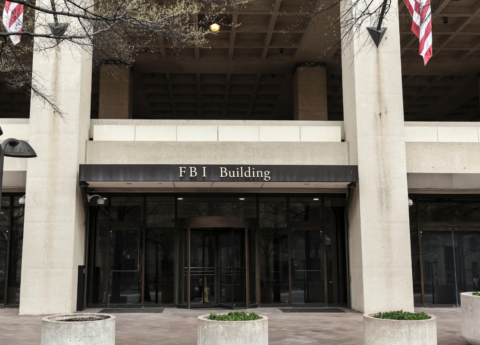House Bill 169 is not a data-driven solution to gang violence prevention. Research shows such an approach does not reduce violent crime, could intensify gang activity and would likely disproportionately lead to the incarceration of persons of color for long periods of time.
Click here for a PDF version of the facts.
Long Sentences Don’t Reduce Violent Crime or Gang Activity, and Can Make Things Worse
The vast majority of deterrence research — research on what actually prevents criminal activity from occurring — does not support claims that the harsh sentence enhancements like those in HB 169 will prevent criminal activity:
- Reviews of deterrence research conclude there is little credible evidence that changes in sanctions affect crime rates.[1]
- The National Research Council’s well-regarded 2014 study found that mandatory minimum sentences and three strikes laws have little or no effect on crime rates.[2]
Long sentences are more likely to increase criminal behavior rather than decrease it:
- Research has shown after serving a long sentence, it is more likely that a person will commit a more serious crime when released.[3]
- Enhanced sentences for those associated with gangs can actually intensify gang activity as gang solidarity becomes an important strategy for surviving such long sentences in prison. There is some evidence of this happening in California and Chicago, for instance.[4]
Disparate Racial Impact of Gang Legislation Seen in Other States
California passed the first legislation of this kind in 1988. Despite the increasing number of white gang members it was largely persons of color who received gang sentence enhancements (which did not result in a reduction in violent crime or gang activity) similar to those in HB 169.
- By 2003, close to half of young African American males in Los Angeles County were in the gang database, often for reasons such as a “suspicious” (to law enforcement) nickname.[5] After Colorado passed gang legislation with a similarly broad definition of “gang,” African Americans accounted for more than half of names on the list of suspected gang members in Denver in 1993, where they were only five percent of the city’s population.[6]
- Kentucky already disproportionately incarcerates African Americans, and state Department of Public Advocacy (DPA) data shows that African American juveniles are more likely to be tried as adults than white juveniles; DPA data also suggests adult African Americans may be more likely to be charged with more serious crimes such as drug trafficking rather than possession.[7]
Unlike Longer Sentences, Intervention Programs for Young People Are Proven Approach
What actually has been shown to reduce gang activity and violence are approaches not in the bill such as prevention and intervention programs for youth.[8]
- The state of New York was more effective at reducing violent crime than the rest of the country between 1999 and 2012 by implementing place-based, evidence-based interventions.[9]
- The federal Office of Juvenile Justice and Delinquency Prevention endorses a number of evidence-based youth programs that include outreach and mentoring, among other strategies, that are effective in preventing gang involvement or intervening with gang-involved youth.[10]
[1] Michael Tonry, “Learning From the Limitations of Deterrence Research,” Crime and Justice (2008), pp. 279-311. Daniel Nagin, “Deterrence in the Twenty-First Century: A Review of the Evidence,” Carnegie Mellon University, 2013.
[2] National Research Council, “The Growth of Incarceration in the United States: Exploring Causes and Consequences,” 2014, https://www.nap.edu/catalog/18613/the-growth-of-incarceration-in-the-united-states-exploring-causes.
[3] David Abrams, “Building Criminal Capital vs Specific Deterrence: The Effect of Incarceration Length on Recidivism,” 2011, https://www.law.upenn.edu/cf/faculty/dabrams/workingpapers/AbramsRecidivism.pdf.
[4] Sara Lynn Van Hofwegen, “Unjust and Ineffective: A Critical Look at California’s STEP Act,” Southern California Interdisciplinary Law Journal (2009), pp. 679–702. Judith Greene and Kevin Pranis, Gang Wars: The Failure of Enforcement Tactics and the Need for Effective Public Safety Strategies, Justice Policy Institute, July 2007, http://www.justicepolicy.org/research/1961.
[5] Van Hofwegen, “Unjust and Ineffective.”
[6] Dirk Johnson, “2 of 3 Young Black Men in Denver Listed by Police as Suspected Gangsters,” The New York Times, 1993, https://www.nytimes.com/1993/12/11/us/2-of-3-young-black-men-in-denver-listed-by-police-as-suspected-gangsters.html.
[7] Ashley Spalding, “Criminal Justice Reform and Racial Disparities in Kentucky,” Kentucky Center for Economic Policy, Sept. 8, 2016, https://kypolicy.org/criminal-justice-reform-and-racial-disparities-in-kentucky-2/.
[8] Greene and Pranis, Gang Wars.
[9]Nazgol Ghandnoosh. “Fewer Prisoners, Less Crime: A Tale of Three States,” The Sentencing Project, 2015, https://sentencingproject.org//www/wp-content/uploads/2015/11/Fewer-Prisoners-Less-Crime-A-Tale-of-Three-States.pdf.
[10] James Howell, “Gang Prevention: An Overview of Research and Programs,” Juvenile Justice Bulletin, U.S. Department of Justice, December 2010, https://www.ncjrs.gov/pdffiles1/ojjdp/231116.pdf.



